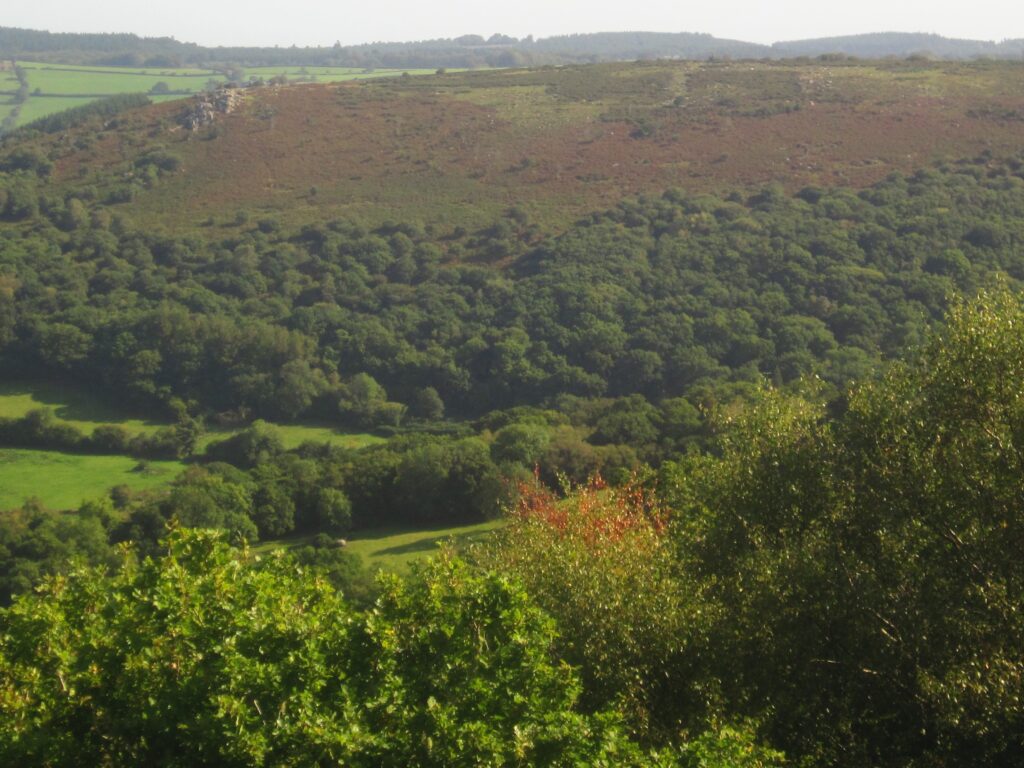The green shoots of regeneration.
During this past winter, with it’s Covid lockdown, and unusual weather, it would be easy to be despondent about rewilding and the regeneration of nature. Endless reports of dead raptors and poor soil quality, Amazon tree felling and peat burning. At times this winter I certainly felt the weight of impending environmental catastrophe upon me, despite the occasional good news stories like the Langholm moor buyout.

However lately I have been out on Dartmoor training for an impending walk, and in passing through the landscape I have seen much to encourage me. A walk through the woods of the Bovey valley was one such example: these woods are often seen as ancient, but in fact with a medieval farm in the middle of them, much of this area must once have been farm land, rather than woods. Yet here is this woodland. Furthermore, where the wood was interspersed with Plantation forestry this timber is being removed, to give way to broadleaf woodland.
Walking in the area of Smallacombe rocks, I can look down on an area now littered with trees, that I can recall in my childhood as being almost devoid of them. The bog, gorse and clitter in this area seem to have prevented the saplings from being grazed off, and now there is a broad swathe of rowan, holly, blackthorn and the like running from the more established woods on the valley floor almost to the summit ridge.
Further over in the same valley, nearer to Emsworthy, there are numerous young saplings growing up in the gorse. If the gorse is not burned off in the next couple of years, these too will be substantial and another area will have started its journey of re-wilding.
On the last three walks I’ve made I have surprised deer. I’ve been within a metre of one roe deer, and I’ve seen a buck and doe in woods within 50 metres of Ponsworthy splasher. Now I know deer graze trees and there may be too many, but for deer to be a regular sighting in the countryside does lift the spirits!
Walking through Heathercombe where the diseased larch have been felled and extracted I read notices describing the broadleaved species planted in some places to replace them, and similarly on the banks of the Dart near Kingsweir I find the National Trust felling plantation to allow for broadleaved regeneration. It feels like organisations are getting the message.
Descending into the Double Dart gorge on a rough track that drops down the hill from Doctor Blackwalls track, I pass through an area of gorse and bracken and note that the bracken is being managed in a manner that I recognise as being beneficial for some butterfly species, and reaching the flat valley floor there is an extensive area of broadleaved tree regeneration that has occurred pretty naturally, whilst nearby there is a fenced off area with signage indicating that it is being managed for nature.
On the Yealm I have passed the area of Hawns and Dendles where again plantation has given way to broadleaved planting, and where the removal of a weir is being considered for the benefit of salmon and other waterborne species, and nearby at Piles Copse there are efforts to manage the woodland in order to expand its area.
So whilst the high moorland of Dartmoor can seem like a wasteland monoculture of Molinia grass and little else, these areas are under siege from a moorland fringe that is slowly, but remorselessly pressing in on it, bringing more woodland and mixed scrub to the scene, with all the birds, mammals and insects that rely on them. We spend a lot of time discussing how we can encourage regeneration, but looking at it another way, it would be hard work and costly trying to stop it.

